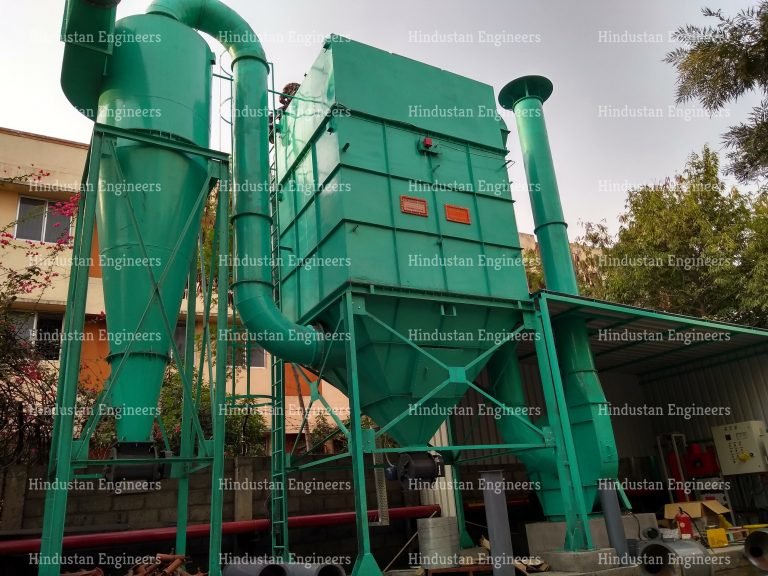Industrial Cyclones

Cyclone separators utilize gravity and a vortex to remove particulates from gaseous streams. Industrial cyclones are used in pollution control applications most commonly as a first stage, lower cost method for removing larger particulate matter (PM) from effluent gas streams. Because cyclone separators do not incorporate filter media or moving parts, the pressure drop (therefore, operating costs) and maintenance requirements tend to be low. They can also be constructed to withstand harsh operating conditions, and since separation in cyclones is a dry process, the equipment is less prone to moisture corrosion.
OPERATION
Cyclone separators operate by incorporating centrifugal, gravitational, and inertial forces to remove fine particles suspended in air or gas. These types of separators use cyclonic action to separate particulates from a gas stream. Typically, PM enters the cyclone separator at an angle (perpendicular to the flow stream, tangentially, or from the side), and is then spun rapidly. A centrifugal force is created by the circular airflow that throws the particulate towards the wall of the cyclone. Once the PM hits the wall, it falls into a hopper below. “Clean” exhaust is then either blown through or recirculated to be filtered again.
TYPES
The four types include tangential, axial, helical and spiral. Body size is important because, as mentioned above, the length of the cyclone body is an important factor in collection efficiency.

This is a device to separate solids (in powder or granular form) from air/gases. When the material is moving as in pneumatic conveying, the solids are separated. In this device, air is made to flow at Industrial Cyclones speed and made to rotate in a cylindrical vessel of suitable design. When the solid material attains high speed, it picks up centrifugal force and chooses to cling to outer surface while air retains high speed it gets due to its velocity factor. Suddenly in the center, air outlet is provided for air to go out while due to centrifugal force the solid material is not able to change direction but goes downwards and gets separated. This device is capable of offering separation efficiency up to 90%, of course, depending upon, design, material, bulk density.
